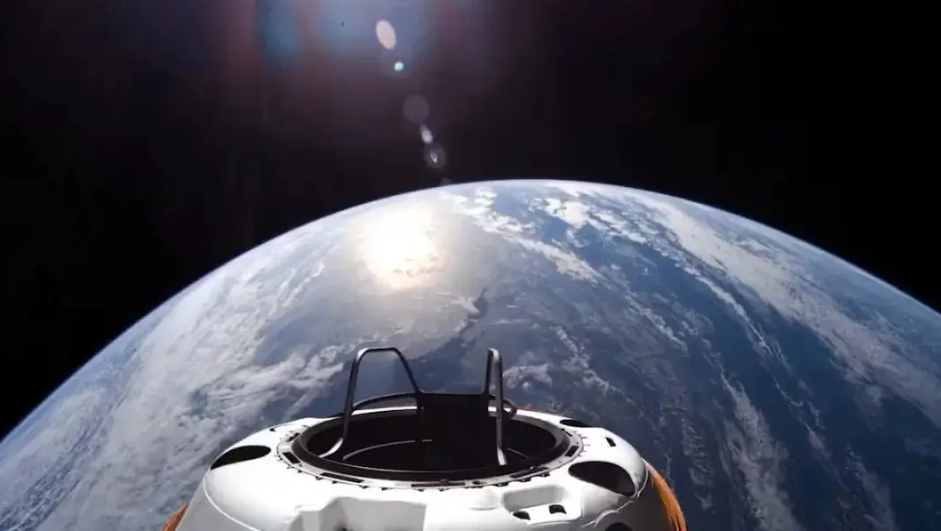
Four non-professional astronauts who carried out the US "Polaris Dawn" space mission returned to Earth on the 15th aboard the US Space Exploration Technology Corporation "Dragon" spacecraft.
These days, Musk and his space operations are once again in the spotlight.
At 6:12 Eastern time on September 12 (18:12 Beijing time), American billionaire Isaac Man and SpaceX engineer Sarah Gillis, who performed the "North Star Dawn" mission on the SpaceX Fortitude Dragon spacecraft, left the capsule for ten minutes one after another, completing the first-ever "civilian spacewalk" and once again creating history.
Many reports quoted foreign media as saying that it set a record since the Apollo program. In fact, records in a specific period of time are difficult to call records, especially the global question of the Apollo moon landing is also a large number of people. The term "Earth orbit" is more precise.
On the very day of the historic spacewalk, the Dragon spacecraft, along with astronauts from three other spacecraft, set another record.
With two Russians and one American aboard the Soyuz MS-26 spacecraft, three Chinese aboard the Chinese Space Station, six Americans (including two stranded Boeing astronauts) and three Russians aboard the International Space Station, plus four Americans on the North Star Dawn mission, the space population reached 19 for the first time ever!
You might find that the space population record stagnated for 26.5 years between 1995 and 2021. It was the emergence of the Chinese Space Station and Dragon spacecraft that made a breakthrough in space population growth. This also reflects that China and Musk have become the main driving force for the development of human spaceflight in the world.
China's manned space flight is the result of increasing national strength in recent decades, and its development path is quite similar to the national strategy of the United States and the Soviet Union. So how did Musk's SpaceX rise to prominence?
If you look at SpaceX's 20 years of growth, you will see that the main factor in its success is continuous innovation guided by business thinking. As a result of SpaceX's foray into human spaceflight, a lot of traditional things have been broken and new ideas have taken their place. We might as well take stock.
The overall design is the biggest innovation in the manned Dragon spacecraft. It is the first manned spacecraft to realize the seven-seat reusable large two-compartment design and the push-escape and power landing integrated propulsion system. However, powered landings and full seats were not realized due to NASA's caution and lack of demand.
In fact, only the push escape that can cover the whole launch is SpaceX's innovation, the big two capsules and the power landing are the first concept of the former Soviet Union's planned "Super Soyuz" (also known as Dawn) spacecraft, but it was abandoned due to many new technologies, the collapse of the Soviet Union, the exhaustion of funds and other reasons, and finally achieved by the manned dragon spacecraft nearly 20 years later.
Manned dragon spacecraft fairing-less launch, non-pressurized cargo bay, laser 3D printed engines, semi-enclosed bulkhead solar arrays, single domed glass viewing Windows, touch screen instruments and operating panels, and the use of various new materials are not disruptive innovations, some are used in the early space era but later eliminated design. These local innovations or micro-innovations are properly applied to the dragon spacecraft, making it significantly different from other spacecraft, thus showing a variety of science fiction colors.
The extravehicular spacesuit used for this commercial space flight is also consistent with Musk's business thinking. Compared with the traditional extra-vehicular spacesuit, it eliminates the portable life support system, greatly simplifies functions, and uses a large number of new materials and smart technologies, making it the lightest and most stylish extra-vehicular spacesuit ever.
For space tourists, the purpose of going outside is not to work but to experience, without going far from the hatch, without using tools, and without spending seven or eight hours. An oxygen-powered umbilical cord makes more sense than an expensive, bulky "backpack for life." At this point, doing subtraction is also innovative.
It is worth mentioning that the Polaris Dawn crew was also wearing this spacesuit when it launched, which means that the extravehicular suit is light enough to be used as an inside suit. Next, SpaceX plans to develop it into an in-cabin and out-board universal spacesuit for use on the International Space Station crew. This is another breakthrough. The future, whether it's a manned dragon spacecraft or a SpaceX spacesuit, is still evolving. We'll wait and see.
Back to human spaceflight. The sea of stars has always been the ultimate and romantic dream of mankind. But in reality, the distance between ordinary people and space is as far away as the stars. Commercial space needs a big enough market to thrive.
The dilemma of manned spaceflight is that commercial applications such as scientific research, military, and communication remote sensing are actually pseudo-needs, because except for medical research that requires human participation, the use of unmanned spacecraft is simpler, safer, and cheaper than that of astronauts in space. The reason for carrying people is not sufficient, and the pseudo demand cannot bring real commercial value.
There is only one application of human spaceflight that cannot be replaced by unmanned spacecraft, and that is space tourism. Since space tourism began in 2001, more than 20 people have made orbital flights and 44 have participated in suborbital flights that broke the Karman Line (100 km).
At present, this is still a high-end niche market, but the potential user base is huge, and the price reduction will lead to the expansion of the market size index. Space tourism is the raison d 'etre for commercial human spaceflight and the core business of the future.

